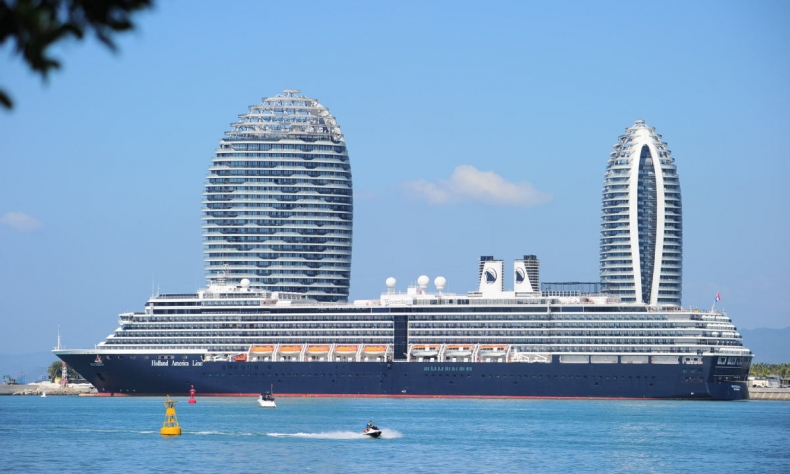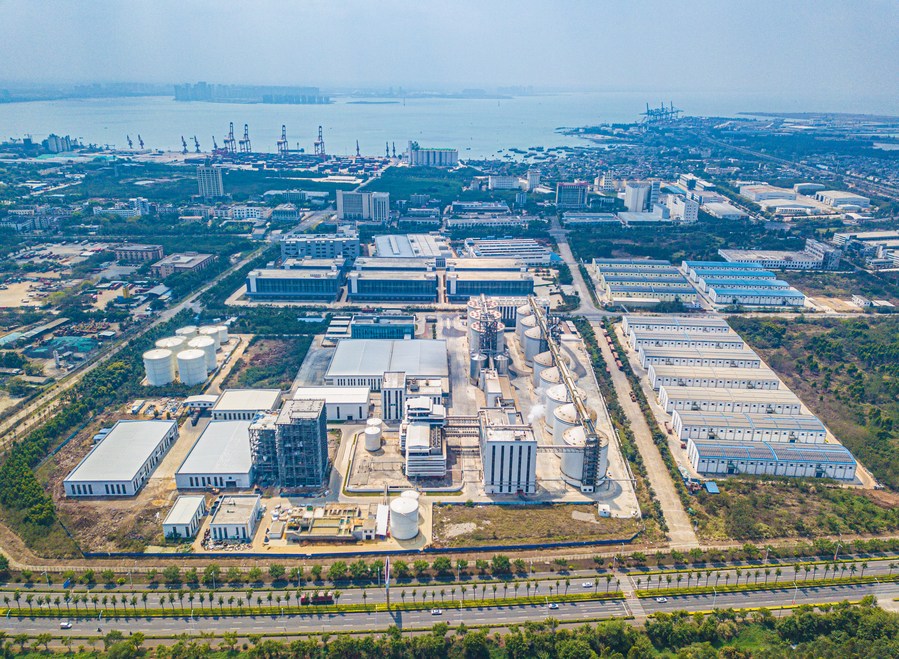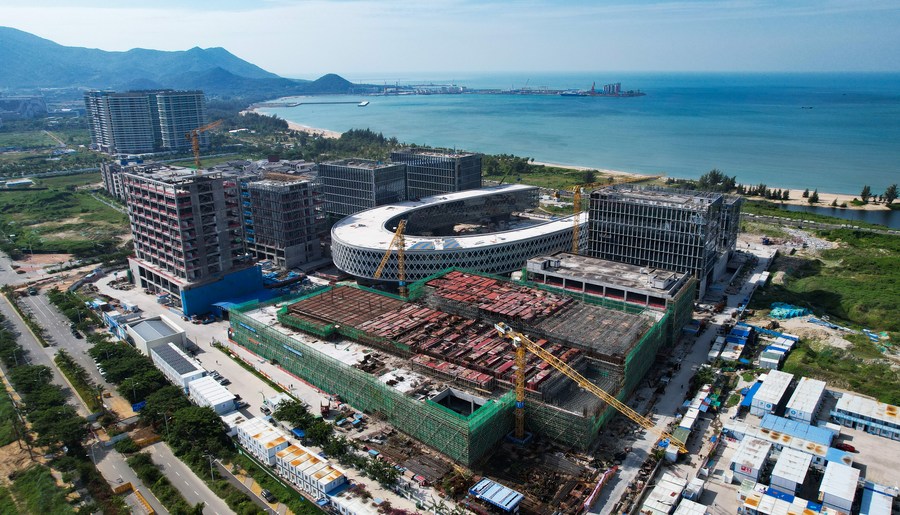What Will Independent Customs Operations in Hainan Bring to China and the World?

The establishment of Hainan Free Trade Port aims to create an area where the circulation of goods, currency, personnel and information are at the nation’s highest level of openness to the world.
The hashtag “Hainan prepares to establish independent customs” has been among the hottest ones recently. As of March 29, it had generated 330 million views on Weibo, China’s equivalent of Twitter, in one week. Establishing independent customs is part of the island province’s drive to build itself into a free trade port (FTP).
On April 13, 2018, China announced it would create a free trade zone (FTZ) covering the whole of Hainan, the country’s southernmost province, and that it would provide support for Hainan to explore and phase in FTP policies. In 2021, the Standing Committee of the National People’s Congress adopted the Hainan Free Trade Port Law, codifying the development of the entire Hainan Island into an FTP into national law.
Establishing independent customs is one aspect of this transition. “Hainan is in a transitional phase from a pilot FTZ to FTP. Only after it starts independent customs operations can it enter the era of the FTP,” Xia Feng, a researcher with Hainan University, told Beijing Review.
The establishment of FTPs is a part of China’s endeavor to improve business environment and facilitate international trade and investment. FTPs are more than just an upgrade of China’s pilot FTZs and the two have different strategic purposes, Wei Jianguo, Vice President of China Center for International Economic Exchanges and former Vice Minister of Commerce of China, said in an article published on China.com.cn. Pilot FTZs focus on testing policies for the free flow of goods with a view to implementing them in the rest of the country, while the establishment of FTPs aims to create areas where the circulation of goods, currency, personnel and information are at the nation’s highest level of openness to the world.
Independent customs
Now, ports and airports in Hainan are being upgraded to increase their capacity for customs clearance and new entry port buildings are under construction. Twenty-seven projects related to customs clearance are under stress testing. The province aims to complete the construction of most of the new customs facilities by the end of this year and begin independent customs operations by the end of 2025.

According to the official account of the Hainan FTP on Weixin, the country’s ubiquitous superapp, independent customs operations will enable most international goods to enter Hainan without customs checks or tariffs on the way in or out, unless they are moving on to the Chinese mainland. Only some specified goods, such as tobacco and alcohol, will be taxed. “Many raw materials will be exempt from tariffs, so the production costs for enterprises in Hainan will be lower,” Xia said.
Customs services on the island will continue to carry out supervisory activities concerning biosafety, public health and food safety on imported goods. Imported commodities that do not fall into these categories will not need to be declared to customs.
Under this new system, the trade border will be between Hainan and the Chinese mainland and Hainan will become a highly open area within China’s territory. When foreign commodities are shipped from Hainan to the mainland, they will be taxed. When mainland goods enter Hainan, they will be considered as exported items.
According to Xia, independent customs operations are a crucial step for building the island into a duty-free haven. “Most imported goods for everyday consumption in Hainan will be exempt from tariffs so Chinese can buy duty-free goods without stepping out of the country’s borders,” he said. Now, Hainan residents or visiting mainlanders can take 100,000 yuan ($14,534) worth of duty-free goods purchased in Hainan to the mainland each year without incurring tariff.
But unlike Hong Kong and Macao special administrative regions, Hainan will not require mainland residents to present a special entry pass to enter, and they can do so with only their ID card. Xia said, “There are no similar restrictions.”
In addition, Hainan resumed its visa-free entry policy on March 15. Individuals with ordinary passports from 59 countries can enjoy visa-free entry to the Hainan FTP.
Over the past five years, Hainan Province has optimized its business environment. It has introduced more than 180 policies to do so, including exempting tariffs for imported raw materials, vehicles and yachts. Also, the province’s foreign investment negative list, covering investment areas and activities restricted or prohibited to foreign investors, contains only 27 items, the shortest in the country.

Thanks to the aforementioned measures, Hainan’s GDP has expanded by an average of 5.3 percent annually in the past five years, while its trade in goods and services surged 23.4 percent and 17.7 percent each year on average during the same period.
The province’s total foreign trade accounted for 34.7 percent of its GDP last year, up 15 percentage points in five years. Its actual use of foreign capital doubled for three consecutive years in 2018, 2019 and 2020, and the five-year total exceeds the sum of the previous 30 years.
However, ensuring the Hainan FTP remains open and safe will be a big challenge, according to Xia. Hainan has seven seaports and its coastline is relatively long. “How can we manage these ports effectively and prevent smuggling at the same time? We need to enhance both Hainan’s customs infrastructure and legal systems to prevent such risks,” Xia said.
The next Hong Kong?
Some have said that Hainan will become “the next Hong Kong.” Xia disagrees. Although he did admit that Hainan needs to learn from the experience of Hong Kong Special Administrative Region to make itself a model of high-level reform and opening up in China, the Hainan FTP is fundamentally different from Hong Kong and other internationally renowned FTPs. It is an FTP with Chinese characteristics. “It is governed by the Communist Party of China under the socialist system. The more open it is, the more we need to strengthen the Party’s leadership over the construction of Hainan FTP,” Xia said.
“There are some red lines we cannot cross,” Xia said, adding that businesses such as casinos will never be established in Hainan.
In fact, the building of the Hainan FTP also enhances cooperation between Hainan and Hong Kong. Hainan-Hong Kong economic cooperation pilot zones were established in different parts of Hainan. On March 10, the first Hong Kong company settled in the pilot zone in Sanya, the southernmost city in Hainan.
As China’s biggest tropical island, tourism has long been a pillar industry in Hainan. Some experts have compared Hainan to Florida in the U.S., a place brimming with tourism resources. “We can learn from Florida’s experience on how to develop its tourism. But tourism is not the only priority of the Hainan FTP. It also aims to become a highly open FTP for innovation and entrepreneurship,” Xia said.
 Facebook
Facebook
 Twitter
Twitter
 Linkedin
Linkedin
 Google +
Google +










